Commercial EV Charging Station: Types & Equipment
Commercial charging is increasingly becoming a steady supplement to residential charging for PEV owners. There are tens of thousands of commercial EV charging stations across the United States, some available for public charging, others available in workplaces or at business venues, such as restaurants, hotels, and shops.
Electric car owners can find the nearest commercial EV charging station by using different apps or interactive maps, which will show them all available stations either at a certain location or along a route. One can also use filters to search for private or planned stations, as well as certain criteria like types of chargers or features available.
Electric cars have many benefits for the environment and sustainability efforts, which is why many campaigns have been developed for the widespread adoption of PEVs. But in order for this to be achievable, drivers and fleets need a robust charging network.
PEVs include plug-in hybrid electric vehicles (PHEVs) and all-electric vehicles (EVs) and all types need access to charging stations, also known as EVSE, for consumers and fleets to consider transitioning. Workplace charging has already boosted market acceptance, but a commercial EV charging station at a public destination or along different routes will certainly move the needle even more.
Types of Commercial EV Charging Stations
It’s a known fact that there are three types of electric car chargers: Level 1, Level 2 and DC fast charger. This classification is done by the rate at which the battery of a PEV is charged. Of course, the charging time depends on other factors than the type of charging equipment, such as how depleted the battery is or what type of battery your car has, or even how much energy it holds.
The range is pretty big, charging times can be anywhere between 20 minutes and 20 hours. To help with this, there are different infrastructure models that businesses can research and study when considering a commercial EV charging station. You can check out the Electric Drive Transportation Association’s GoElectricDrive website and Plug In America’s Get Equipped resource. When choosing electric vehicle supply equipment for a specific business, you should consider many factors, such as networking, payment capabilities, as well as operation and maintenance.
Level 1 Charging | Level 2 Charging 10 to 20 miles range / hour of charging | DC Fast Charging |
J1772 charge port | J1772 charge port | CCS CHAdeMO Tesla charge port |
| Level 1 equipment provides alternating current through a 120 volt AC plug. All PEVs come with a Level 1 cordset, so no additional equipment is required. On the one end the cordset has a standard NEMA connector, and on the other end is an SAE J1772 standard connector. The NEMA connector plugs into a standard NEMA wall outlet. Tesla vehicles have a unique charge port and connector, which is why they come with a J1772 adapter. Level 1 chargers are not very common for commercial purposes. As of 2020, less than 5% of public charging outlets in the US were Level 1. | Level 2 equipment offers alternating current through 240 V or 208 V electrical service. Level 2 charging stations are very common, for both home charging and public / workplace charging. It can operate up to 80 Amps and uses the same J1772 connector and charge port as Level 1. They require a dedicated 40-Amp circuit. Level 2 chargers are very common and many businesses choose this route. As of 2020, over 80% of public outlets in the US were Level 2. | Direct-current (DC) fast charging equipment typically uses 208/48 V AC three-phase input. It allows for rapid charging in heavy traffic corridors at installed locations. There are 3 different types of DC charger ports on electric vehicles: SAE Combine Charging System, also known as CCS, CHAdeMO, which is the most common type, and Tesla. DC fast chargers are not as common as Level 2 stations, most likely because of the increased cost. As of 2020, a little over 15% of charging outlets in the US were DC fast charging stations. |
Infrastructure For Commercial EV Charging Stations
As mentioned above, widespread adoption of electric vehicles is ideal, but in order to bolster market acceptance, we need to increase the available public and private charging equipment. And that requires infrastructure procurement. As a business, if you’re interested in adding a commercial EV charging station, then you need to learn how to successfully plan, acquire and install charging infrastructure.
Once that has been achieved, you need to also consider charging infrastructure operation and maintenance, because owning EVSEs means also knowing how to properly operate and maintain them. There are plenty of resources from local or state organizations to help you learn about infrastructure procurement, operation and maintenance considerations.
Additional Options For a Commercial EV Charging Station
In 2018, another standard was developed for higher rates of AC charging, known as SAE J3068, which uses three-phase power. This has become common at industrial and commercial locations in the United States. Some components were adapted from the European three-phase standards and adjusted to suit the North American AC grid requirements and voltages.
Extreme fast chargers, also known as XFC, are another option that is rapidly being deployed in the US. These are capable of power outputs of up to 350kW. The U.S. Department of Energy’s Office of Energy Efficiency and Renewable Energy’s Vehicle Technologies Office is actively researching ways to bridge the technology gap associated with XFC charging networks across the US, even though some of these are already available from private manufacturers.
Most electric cars on the roads today are not capable of charging at rates higher than 50kW anyway. But there’s no doubt that vehicle technology is advancing and very soon new EV models will have that ability, therefore enabling the use of XFC.





